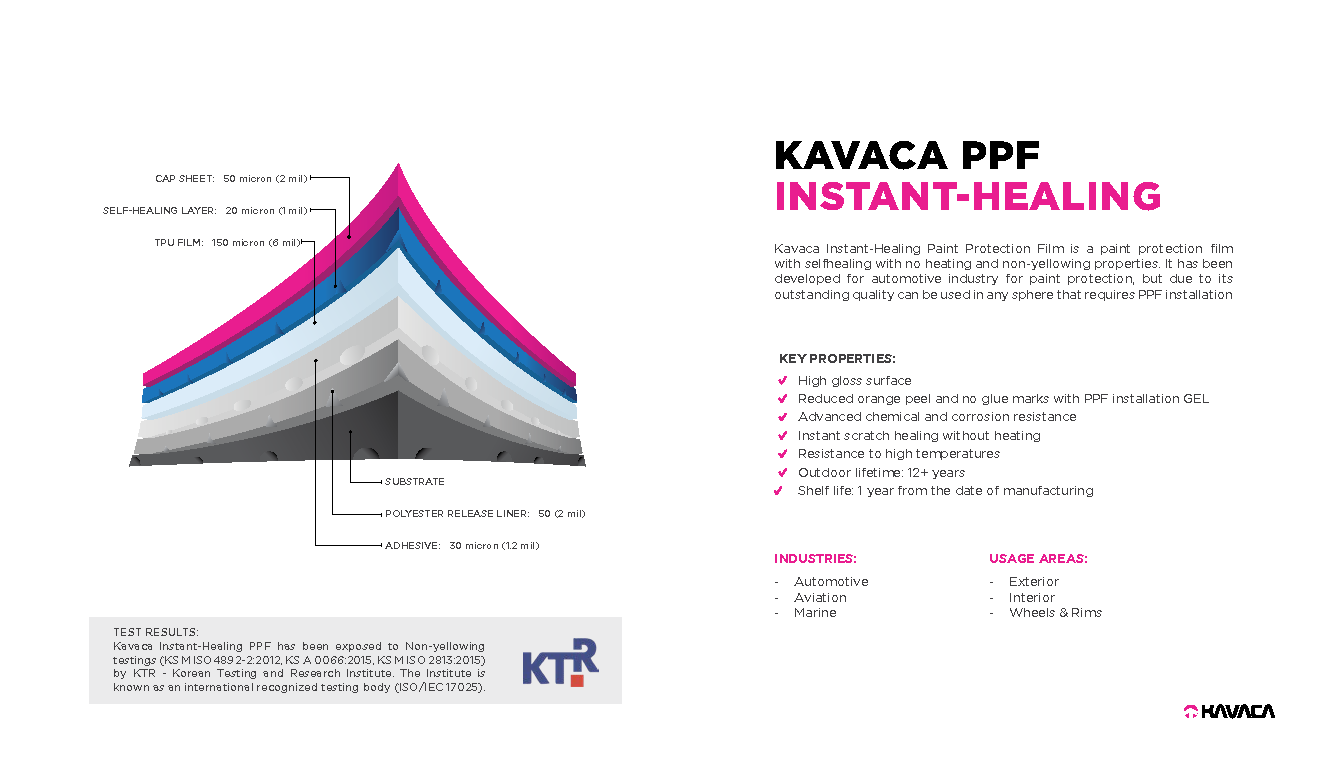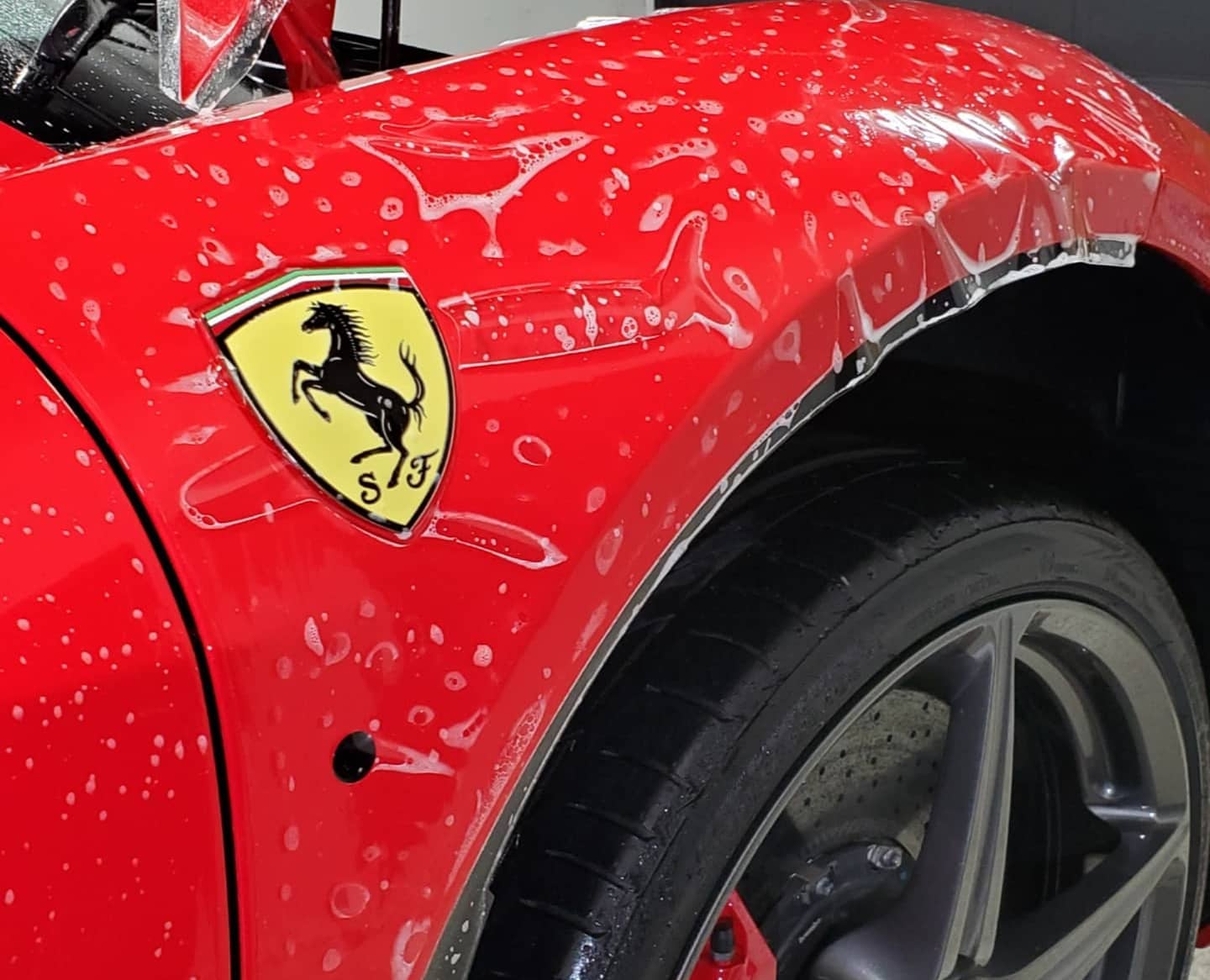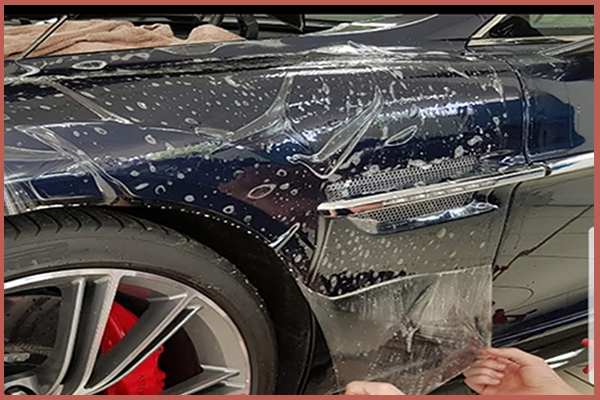PPF in Durham Ontario
Getting to know Automotive Paint Protection Film: What Clear Bra does for your car?
Automotive Protective Films go by many different names: Clear Bra, Clear Mask, Invisible Shield, Clear Wrap, Rock Chip Protection, Car Scratch Protective Film, etc. The most common terms for car protective films are simply Paint Protection Film and Clear Bra, and we’ll use those two terms interchangeably in this article.
Films: It keeps your car looking better for longer. That’s it. That’s what this is all about. Car Paint Protection Film is the most comprehensive form of defense you can establish between your car and all that can damage your car’s appearance. Because of Paint Protection Film’s high impact resistance, its application will protect your paint from chips and scratches caused by rocks and road debris. The urethane film is resistant to corrosion and acidic contaminants, meaning that it creates a line of defense from chemical stains and etching caused by bird droppings, bug splatter, or mineral deposits and acid rain. It does not oxidize with exposure to the sun, and will guard your paint from fading caused by UV rays. The top layer of a quality film is made up of elastomeric polymers that return to their natural shape after being stretched or disfigured, giving the film a “self-healing” property. That means when light scratches are inflicted in the film, it absorbs the damage and returns to the texture and properties it had before the incident.

All that to say, applying a quality Clear Bra is something you can do today in order to help maintain the look and quality of your car’s paint for years to come.
Now, let’s remember, while Paint Protection Film is powerful and it’s benefits are numerous, it is not a cure-all when it comes to keeping shiny cars shiny. Nothing will make your car bullet proof. There are rocks that can puncture a Clear Bra. If bird droppings or bug splatter are allowed to sit on film for a long period of time, it can damage the film. After applying Paint Protection Film, you will still have to wash your car. There is no one-stop-shop solution to perfect and unending gloss. That’s not what Paint Protection Film promises. Rather, Paint Protection Film promises that after application, when the forces of nature fight against the depth and clarity of your car’s paint, the paint will fight back. You will add value to your car by protecting it from damage you could not have avoided otherwise. In the words we used earlier, Paint Protection Film keeps your car looking better for longer.
Where did Paint Protection Film come from? The history behind Clear Bra
Whenever you’re getting to know someone or something, it’s helpful to get some background information. So how about a little bio on the technology behind Clear Bra.
Automotive Paint Protection Film is a transparent, urethane material. Urethane technology was developed during the Vietnam War, when U.S. helicopters were crashing due to damage on the leading edge of rotor blades. The military worked with 3M to develop a technology that would be lightweight, but resilient, and could be replaced at the fraction of the cost of replacing an entire rotor blade (or a crashed helicopter for that matter).
- In the 1970s, the military expanded its use of urethane films to the noses of fighter jets, and because the technology has been so successful and efficient, 3M still manufactures a variety of urethane films for military and aerospace purposes to this day.
- In the 1980s, NASCAR saw how urethane technology could be beneficial in protecting the front half of race cars. Advertisers pay a lot of money to get their decals plastered on the front of fast cars, and I’m sure they weren’t too keen on those decals getting peppered by rock chips.
- During the 1990s, urethane films became available to the general consumer for automotive protection. Since then the technology has been continually refined and improved, and has been enthusiastically welcomed across the automotive industry. Today Paint Protection Films are OEM approved by virtually all automotive manufacturers.

What is used to make Paint Protection Film? The technology behind Clear Bra
If you’re going to wrap something around your fine new vehicle, you’ll want to know not only where it came from, but what it is exactly. Let’s talk a little bit more about what’s inside a sheet of Paint Protection Film. The key ingredient is urethane, a powerful and versatile polymer made from carbamate links. As a compound, it has unique attributes: It is lightweight and transparent, like plastic. But unlike plastic it is not brittle or susceptible to tears and cracks. It has a high resistance to impact, abrasion, and corrosion. It is also incredibly flexible, and can return to its natural shape after being stretched or disfigured.
Given the polymer’s diverse and advantageous attributes, it has a wide variety of industrial and recreational applications. Urethane is used in the household caulk with which you line your bathroom tiles, because it seals spaces from moisture and prevents the growth of mildew or fungus. It can also be found coating boats and underwater cables to prevent damage. It is used in various sporting equipment parts, from football pads to surfboard fins. Its strength and resistance to wear and tear makes it an ideal component for manufacturing and mining equipment. As we mentioned earlier, urethane is still used to protect various parts of military and aerospace equipment.
The applications of urethane as a polymer are broad, but today we are talking about your car, and for the benefit of your car, urethane serves as a central ingredient in a clear film around 8 mils (0.008 inches) thick.
After being properly applied, Paint Protection Film is invisible to the naked eye and does not inhibit the depth and clarity of your factory paint. But what about over time? If you’ve done some reading around the Internet, you may have encountered individuals documenting defects that have appeared in their Clear Bra after a certain amount of time. In particular, some people who have purchased an after-market Clear Bra have noted yellowing, blistering, and peeling. For you to make an informed decision, it’s important to know what’s behind each of these de generations and what you’ll need to do to avoid them.
Yellowing:
An early complaint against Paint Protection Film was that after time it began turning yellow, which, of course, has a significant impact on the look of a vehicle’s paint, especially for white cars. This complaint was particularly prevalent when Clear Bras first started being applied to consumer automobiles. After researching the matter, film manufacturing companies found that the yellowing effect came from the adhesive that was used to bind a film to the body of a car. UV exposure was oxidizing the adhesive, which lead to discoloration. Upon this discovery, companies began researching alternative adhesives, and began using the acrylic adhesives that are found on most Clear Bras today. This newly developed adhesive is UV resistant, and will not oxidize or discolor. This effectively resolved the discoloration concern for Paint Protection Film. Today, if you put a sub-standard film on your car, it may use an inferior adhesive and lead to discoloration. But all quality professional film manufacturers, like XPEL and LLumar, use a more recently developed adhesive that does not discolor due to UV exposure.
Blistering:
A Clear Bra is said to “blister” when small air bubbles are found underneath the film. The blistering effect has everything to do with the quality of application. Typically, an air bubble occurs because a contaminant is trapped under the film, creating separation between the body of the vehicle and the Clear Bra. Overtime this can lead to growing bubbles under the film. A proper application process includes hairsplitting attention to the vehicle’s surface before any film touches paint. This includes washing, claying, and polishing. Moreover, a professional application center creates a controlled environment where the air can be filtered to remove contaminants that could potentially get trapped underneath the film. Thus, a sub-par film and unprofessional application can lead to blistering. But when a quality film is properly applied by an experienced technician, the risk is at most very minimal.
Peeling:
Peeling is, of course, when the edges of a film begin to peel away from the paint. It can result from a sub-standard film or unprofessional application, but it is often the result of improper care. Specifically, if you are using a pressure wash to clean a car with Paint Protection Film, it is important to stay at least 12 inches away from the film, and particularly from any exposed edges. If a pressure washer is directed at the edge of a Clear Bra, it can begin lifting the film, which leads to peeling.
In sum, the complaints against Paint Protection Film do arise from real-world situations. However, as we have outlined, these situations have specific causes that can be averted. If you purchase a high quality film (like XPEL Ultimate or LLumar Platinum Paint Protection Film), have it installed at a reputable shop, and properly care for your protected vehicle, then the risk of defects like yellowing, blistering, or peeling are next to none. And if any of those things do occur, you will be covered by a ten year manufacturers warranty.
There are a lot of people that flat out wonder how does PPF work. Well, as we explained above, the science infused in these advanced materials helps to block common road debris from damaging the vehicle’s surface. If it’s hit hard enough, the PPF may in fact scratch. This is where the self-healing properties of paint protection film comes into practical application.
However, if a product is truly self-healing, it should possess the technology and ability to fix itself without an outside source. A new, revolutionary paint protection film called Kavaca – by Ceramic Pro is a genuine Instant Healing PPF.
By investing in an Instant Healing PPF like Ceramic Pro’s Kavaca, you’ll receive an honest and genuine instant healing solution. It’s the only PPF on the market today infused with nano-technology that does not require professional help to self-heal. It’s truly the best PPF, offers you superior protection, and can hold up for 10 years or longer.
Key Properties:

Window Tinting In The Ajax and GTA Area
Tinting the windows of your vehicle is a great way to improve the look of your vehicle aesthetically while still offering many practical and functional benefits. While tinting your windows does alter the exterior look of your vehicle it also alters the interior look as well providing a darker field of vision while looking out of the side windows of the vehicle. That said, as a preserver of vehicles and my interest in keeping your vehicle from deteriorating on the outside and inside I would recommend window tint to help preserve the interior; that’s right, the interior ! While the standard glass used in car windows can block some UV radiation, a car window tint of good quality from a reputable manufacturer —if applied correctly—can help increase protection from ultraviolet radiation. It can also help preserve the interior of your car, including the upholstery, carpeting, and dashboard, which can fade over time by exposure to sunlight.
The percentage of tint is the amount of light coming into the vehicle. Therefore “20% Tint” blocks 80% of the light from coming in or “35% Tint” blocks 65% of the light from coming in.
- Reduces up to 80% of heat from entering the vehicle.
- The comfort of sitting in the shade of a vehicle with tinted windows on those hot sunny days.
- No more fighting to spin the sun visor when the sun is in your face.
- Blocks up to 99% of harmful UV light transferred in to your vehicle.
- It protects the interior surfaces of your vehicle from fading (ie: Dashboard, plastic trim, cloth seats.
- Prevents dry cracking of leather and plastic surfaces caused by sun exposure.
- Offering more privacy to you and the interior of your vehicle.
- Detouring thieves from trying to see valuables inside your car.
- Feel more comfortable in traffic.
- Safety of shatter proofing
- In the event of a side impact collision. The glass shatters and explodes into the vehicle, throwing glass shards everywhere.
- Window tint film will act as a sticky layer of plastic holding the glass shards together, reducing the risk of injury.
Window Tint Films In Ajax Ontario
Of all the different types of window films available, they typically boil down to the following types. We’ve quickly defined the main differences between these window film materials as well as give you an idea of a “good, better, best” type situation.
- Dyed Window Tint (Good) – Most economical window tint film. Dyed window tint blocks light rays and absorbs some heat. Ideal solution for those who just want privacy but aren’t concerned about UV light or infrared light rejection.
- Metalized Window Tint (Better) – Reflects heat using metallic particles in the film. A step up from dyed film, it looks a tad shiny from the outside. The major downside to metalized window film is it can interfere with cell phone and GPS signals.
- Carbon Window Tint (Better) – A step up from metalized window films, carbon window tint uses carbon particle mixed into the film. This window tint rejects more heat than metalized, without cell signal interference, and it provides a unique matte look.
- Ceramic Window Tint (Best) – The best results from a window film. Ceramic films use ceramic particles to reject heat, sun glare, and UV rays. This film offers the highest levels of all categories while never sacrificing visibility.
What Makes Ceramic Window Tint the Best?
Ceramic window tint films are the newest technology on the market. They are made using nano-ceramic technology which is nonconductive to heat and nonmetallic (no cell phone signal interference). The material itself simply outperforms all other films in laboratory studies in the areas of UV light rejection, infrared light rejection, sun glare reduction, and visibility. In addition, it adds structural stability to the window making the window more shatter-proof.



























